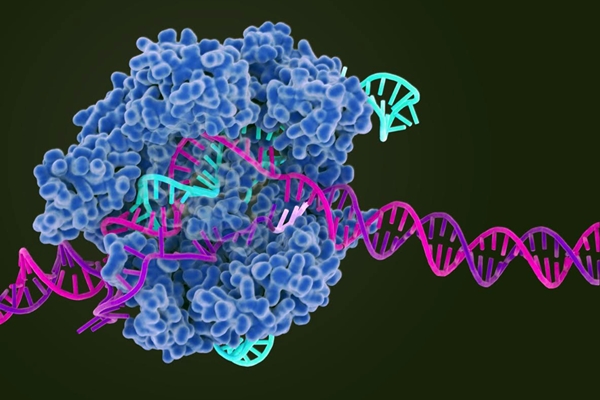26 March 2018. A bioengineering lab at Harvard University designed a refinement for genome editing to identify and remove small genetic mutations that can lead to diseases or organisms resistant to current drugs. Researchers from the Wyss Institute, a biological engineering research center at Harvard, describe their process in the 19 March issue of Proceedings of the National Academy of Sciences (paid subscription required).
A team from the labs of geneticist George Church and systems biologist James Collins, on the faculty at MIT as well as Harvard, are seeking better methods for dealing with point mutations, variations in single nucleotide polymorphisms, or SNPs. These single change in base pairs are the most common type of mutation and generally have little effect on organisms. But in some cases, as when inside genes or regions where genes are regulated, SNPs can play a larger role. One example is bacteria, where even minute variations in their DNA can make the microorganisms resistant to current antibiotics.
The researchers led by Alejandro Chavez, now on the faculty at Columbia University, devised their process as enhancements to the emerging genome editing technology Crispr, short for short for clustered regularly interspaced short palindromic repeats. Crispr is based on bacterial defense mechanisms that use RNA to identify and monitor precise locations in DNA. The actual editing of genomes with Crispr employs enzymes that cleave DNA strands at the desired points, with Crispr-associated protein 9, or Cas9, being the enzyme used most often.
The team’s Crispr-Cas9 technology is able to discriminate in genomic locations down to single SNPs, accomplished by more precisely engineering the RNA to guide Cas9 enzymes to highly specific locations. Without this capability, say the researchers, Crispr edits can result in gain-of-function mutations that can cause unwanted changes in cells or tissue. “By focusing instead on guide RNA features,” says Church in a Wyss Institute statement, “our approach dramatically enhances Cas9’s specificity up to a level where single nucleotide polymorphisms can be clearly distinguished and unwanted genetic variants erased.”
“We hypothesized,” notes Chavez, “that for a given pair of targets that differ by a single point mutation, a set of mismatches could be identified in the guide RNA that would eliminate Cas9’s activity on the normal sequence while maintaining robust activity on the one with a deleterious point mutation.” The researchers tested that hypothesis with E. coli, best known as a bacteria causing intestinal infections, although most types of E. coli are harmless. In lab cultures, the more precise Crispr-Cas9 process found and identified mismatched point mutations in E. coli DNA. But the techniques worked as well in the gastrointestinal tracts of lab mice, a more complex and uncontrolled environment.
The researchers believe these enhanced, more precise genome editing techniques can act as a way to monitor target genomes, such as those in disease-causing bacteria, to identify mutations almost as they occur. One practical application is insuring the integrity of microorganism culture collections used in research labs.
Collins adds that “we are now able to prevent often occurring mutations that confer antibiotic resistance and ask, which other genetic changes could lead to the same result. This may improve our understanding of resistance mechanisms and potentially offer new therapeutic entry points.”
Harvard University filed a patent application on the technology. In addition, Church is a serial entrepreneur and a founder of several companies commercializing genome editing technologies.
More from Science & Enterprise:
- Genome Editing Yields Quality Beer Without Hops
- Crispr Techniques Devised for Editing RNA
- Patents Awarded for Genetic Editing of CAR T-Cells
- Stem Cells Created with Gene Editing
- Large-Scale Genome Editing Technology in Development
* * *


 RSS - Posts
RSS - Posts
You must be logged in to post a comment.